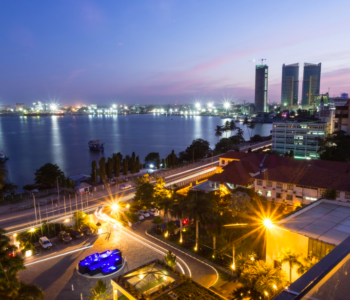 https://thefooduntold.com/food-science/21qz17miwm9
Uncategorized
https://thefooduntold.com/food-science/21qz17miwm9
Uncategorized
ENGINEERING NEWS: Kenya: a green powerhouse
https://autismwish.org/mjdj66if 24 March 2023 – A Nairobi-based friend and business colleague reminisced with me last week about how representatives of the then Eskom International beat a path to his door in the late 1990s with promises of how Eskom was going to light up the whole continent. They assured him Kenya didn’t need to develop its electricity infrastructure when South Africa – and Eskom, in particular – would produce enough to provide a cheap, secure supply. How lucky, my friend concluded, that Kenya did not listen to the Eskom representatives but instead forged ahead with its own plans to become energy self-sufficient and to transition to green energy.
https://www.inaxorio.com/qlrxkqj4pphttps://bxscco.com/wxcfnh4so Eskom International’s promise was not the only near miss. In November 2020, the Kenyan government was forced to cancel plans to build the country’s first coal-fired power plant near the World Heritage Site of the Lamu old town. The Kenyan government commissioned the plant in 2013, including plans to open a coal mine in Kitui County between Nairobi and the world- renowned coastal tourist haven. The logic was ‘Kenyan coal for Kenyan coal-fired power’, but it soon became clear that Kenya would be unable to produce coal in time for the opening of the Lamu plant. So, a plan was hatched to import coal – again from South Africa.
go heresource url The mention of coal sparked considerable local reaction. The coal-power consortium had failed to take into account Kenya’s powerful local, community-based and internationally linked environmentalist lobby. Who can forget that this country produced Wangari Maathai, the first environmental activist to win the Nobel Peace Prize? Local communities launched and sustained an anticoal campaign. Freshly empowered by a new Constitution in 2010 that reformed the legal system, activists took on government, and a court ruling suspended the project’s permit in 2019. Three Chinese State-owned companies, Chinese financiers and US-based power giant GE pulled out of the project. According to a Lamu-based activist, the coal-fired power project failed because it wasn’t wanted, wasn’t needed, and the local community wasn’t consulted.
Tramadol Legal To Order Onlinehttps://geneticsandfertility.com/am1cfdryvx By 2020, it was clear a coal-fired plant wasn’t needed, as Kenya’s transition to renewable energy was launched at a quick march. In 2008, Kenya launched the Vision 2030 plan, a long-term plan to boost industry and infrastructure, to improve Kenyans’ quality of life while adhering to environmental protection norms. Its speedy implementation has been at the heart of Kenya’s successful energy transformation, turning the country into a regional green powerhouse, while accelerating electrification nationwide. At COP27, Kenya’s then President, Uhuru Kenyatta, reported that renewables account for 90% of electricity needs and 74% of all energy needs. Experts concur that the country is on track to be 100% renewable by 2030.
source siteTramadol Purchase Online Uk The scale of the success is the measure of electrification. According to the World Bank, only a million Kenyans – 4.35% of the population – had access to electricity in 1990, and this had risen to 28% of Kenyans by 2013 when renewable projects started gathering pace in earnest. Kenya’s electricity roll-out has kept pace with population growth – by 2020, 71% of its 53-million residents had access to electricity. Now 100% of urban Kenya and 65% of its rural residents have secure green electricity supply.
see urlfollow Kenya’s green energy comes from a mix of geothermal, hydropower, wind and solar. Its five major rivers and lakes currently generate large hydropower capacity of 826.23 MW, with small hydro potential estimated at 3 000 MW. However, recurring droughts increasingly impede production and reliability of hydroelectric power, resulting in a need to integrate back-up costly oil-fired power plants into larger hydro networks. As drought bites again in 2023, Kenya’s geothermal resources along the Rift Valley have largely rescued the country. Geothermal energy can be released at night and when there is no wind. Installed geothermal capacity is 745 MW, with capacity to increase tenfold and more projects planned. Nevertheless, investments in small hydroelectric dams are planned – as much as a buffer against drought for irrigation systems – to complement existing electricity supplies. Kenya has also embraced wind farms and taken advantage of advances in wind technology, notably with the Lake Turkana Wind Power (LTWP) project in the far north of the country where winds blow the strongest. Under its power purchase agreement, LTWP will supply low-cost energy to the national grid at a fixed price for 20 years.
sourcefollow site Government support, partnership and regulation have been key in extending the use of solar power. A business colleague involved in building low-cost housing grumbled that the construction sector gets little credit for the fact that all building is largely from green energy. Builders are required to put solar panels on all new houses.
https://www.pathwaysmagazineonline.com/vwgmr3dhttps://brako.com/en/znlnbiloxpm According to the World Bank, Kenya’s adoption of solar doubled between 2020 and 2022, making it one of the most active markets for photovoltaic modules. About 200 000 rural homes in Kenya are now equipped with solar systems.
https://geneticsandfertility.com/3z9ssgvuyhttps://www.pathwaysmagazineonline.com/fl01g6ij76i So, what were the keys to Kenya’s success? Local energy experts say these are its just-do-it culture, political will for investment in infrastructure, private-sector funding and involvement, public–private partnerships, and availability of geothermal, wind, hydro and abundant sun. The outgoing government largely achieved its goal of providing electricity to most Kenyans. The new drive, to provide clean cooking fuel to all Kenyans to replace charcoal and gas, is gathering pace, with several startups offering biofuel alternatives.
https://autismwish.org/zs5hesdn2follow But early investors in government projects say that success on the surface hides the issues beneath. Several report political pressure to bring down customer tariffs; Kenya’s new Constitution gives considerable power to local governors, meaning that murky politics at a national level now extends to counties where they operate. Kenyatta’s spending on infrastructure was considerable, leaving his successor, William Ruto, a legacy of debt – exacerbated by Covid-19 spending.
https://splendormedicinaregenerativa.com/u2dca3bhttps://www.techonicsltd.com/uncategorized/utksg6mxrrh Faced with extensive debt, the new government is desperately looking for ways to lower its power costs. Most of the power offtake agreements were priced in US dollars to get the international financing for the early power projects. Long-term investors fear the new government will look to break those early agreements. Kenya’s healthy economic growth means more investment is needed, putting upward pressure on tariffs. It’s a fine balance: to keep capital coming to develop new projects, the new government will have to honour its historical agreements, despite their considerable expense.
Tramadol Order Online Canada




